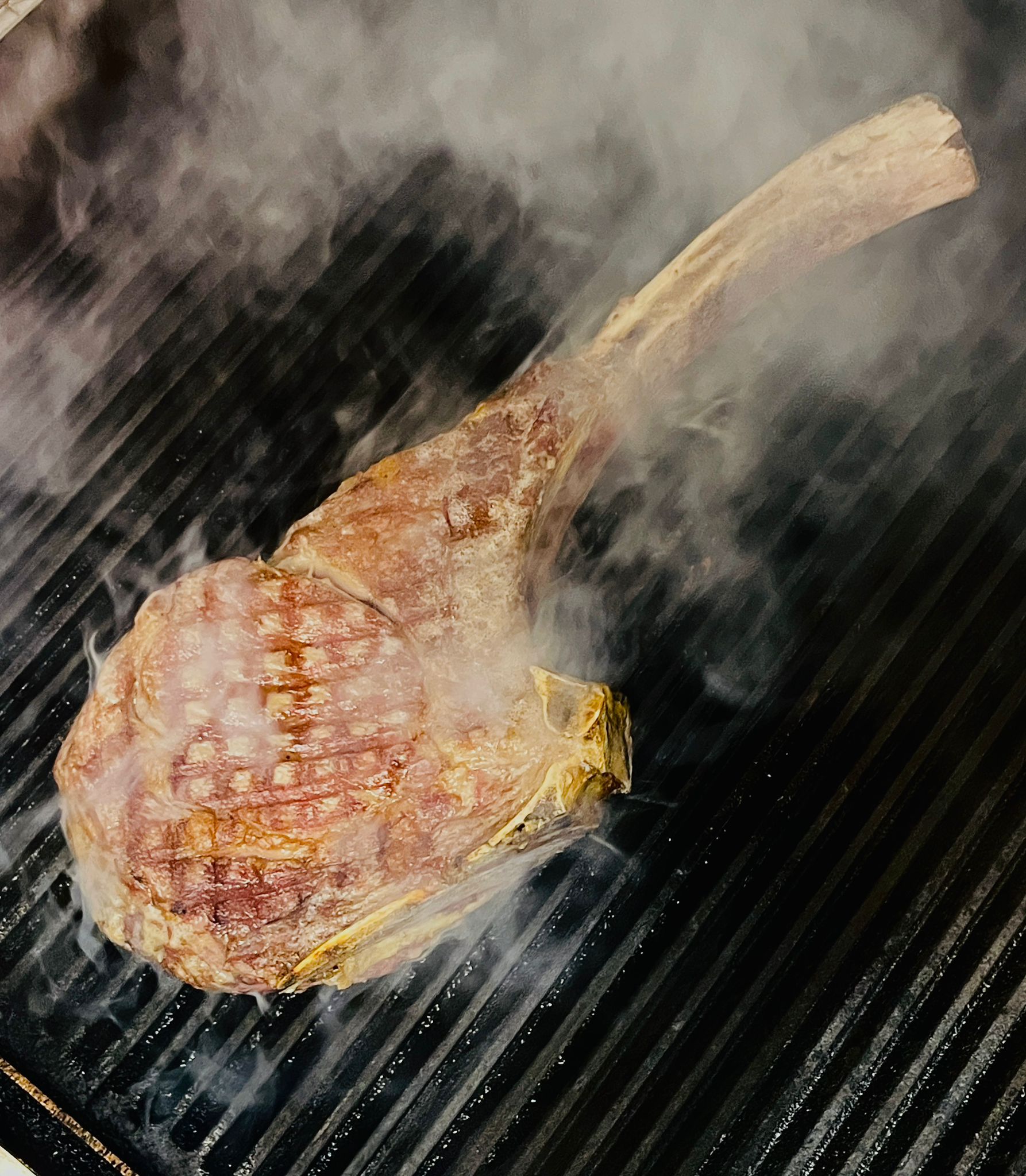Meat for Steak? – Choose Wisely! 🥩
A steak is one of the most valued meat dishes, and its quality and taste largely depend on the careful selection of the meat. The right cut is the foundation of success, determining both the flavor and texture of the finished dish

Choosing the Right Meat: The Key to a Delicious Steak
A steak is one of the most valued meat dishes, and its quality and taste largely depend on the careful selection of the meat. The right cut is the foundation of success, determining both the flavor and texture of the finished dish. Among the most popular choices are:
Rib-eye: Known for its characteristic “fat eye,” the rib-eye is exceptionally juicy and full of flavor due to its even distribution of fat, known as marbling. This marbling not only gives the meat a unique taste but also ensures the steak remains tender and juicy even at higher cooking temperatures. Rib-eye is a choice for those who appreciate a deep, rich flavor and buttery texture, as well as those who prefer steaks with an intense, rich taste.
T-bone or New York Strip: The sirloin is characterized by well-developed marbling and a thicker layer of fat, which melts during cooking, adding juiciness and deep flavor to the meat. The sirloin combines the tenderness of the meat and the pronounced flavor of fat, making it an ideal choice for those who enjoy a firmer texture and refined aroma. Sirloin steak may have a more meaty flavor compared to rib-eye, offering an excellent balance between tenderness and richness of taste.
However, choosing the right cut of meat doesn’t end with the type of steak. You should also pay attention to its origin, degree of marbling, and the thickness of the cut itself, as these factors directly impact the cooking method and final taste experience. It’s also worth considering your own preferences regarding the degree of doneness, which can either highlight or suppress certain flavor notes in the meat.
In addition to the highly prized rib-eye and equally famous sirloin, there is a wide range of other popular cuts of meat that are also perfect for steaks and are used in our daily work:
Tenderloin/Fillet: The most tender part of the beef, characterized by a subtle flavor and softness. The tenderloin has a low fat content, making it less intense in flavor but exceptionally tender.
Flat Iron Steak: A relatively unknown but increasingly appreciated cut of meat, sourced from the upper shoulder blade. The flat iron steak is rich in flavor and has distinct, delicate marbling that adds juiciness.
Flank Steak: A cut from the lower abdomen, known for its robust flavor and fibrous texture. Flank steak tastes best when sliced against the grain and served medium-rare or slightly rare.
Picanha: A Brazilian steak from the top of the cow’s rump, covered with a thick layer of fat that adds exceptional flavor and juiciness. The steak is tender but has a distinct texture. Most often grilled on a spit, it offers an intense, meaty flavor with a crispy fat layer.
Hanger Steak: A particularly juicy and intensely meaty steak, known for its rich flavor and tender texture. Cut from the diaphragm area, it has characteristic fibers and is ideal for quick frying at high temperatures. Often served medium-rare to retain its juiciness and full flavor.
Aging Meat: The Art of Maturing
Aging, the process of maturing meat, is a crucial step in achieving perfect texture and sophisticated flavor in a steak. Through proper aging, the meat acquires exceptional tenderness, aroma, and depth of flavor that are unattainable with fresh meat. There are two main types of aging:
Dry-aging: This process typically lasts from 4 to 12 weeks, depending on the desired effect. The meat matures in controlled conditions, with a constant temperature and humidity. During dry-aging, water evaporates from the meat, leading to a concentration of flavors. Enzymes naturally present in the meat break down collagen fibers, making it incredibly tender. Dry-aged steaks are characterized by an intense, complex flavor with distinct nutty and umami notes.
Wet-aging: In this process, the meat matures in vacuum-sealed packaging, usually for 2-3 weeks. Unlike dry-aging, the meat in this case does not lose moisture, making it exceptionally juicy. Wet-aging gives the meat a more delicate, subtle flavor, retaining its natural freshness. This method is commonly used for steaks that are to be cooked quickly to retain their moisture and tenderness.
In addition to choosing the aging method, it’s also important to remember the quality of the meat itself and the appropriate storage conditions, which are crucial for achieving optimal results. Aging is an art that requires precision, patience, and a deep understanding of the process, but the end result is a steak with unparalleled flavor and texture that will satisfy even the most discerning palates.
Marbling: A Measure of Meat Quality
Marbling, or the degree of fat interspersed in the meat, is a key indicator of beef quality. This fat, evenly distributed in the meat, melts during cooking, resulting in a juicy, tender, and intensely flavored steak. The higher the degree of marbling, the higher the quality of the meat, often reflected in its price. Marbling is therefore not only a visual indicator but above all a guarantee of excellent taste qualities that will satisfy even the most demanding gourmets.
Meat Preparation: Techniques and Tips
Preparing a steak begins long before it is placed on the grill or pan. The meat should be dried and cleaned of membranes. The steak should rest at room temperature for about two hours before cooking. Seasoning is a topic surrounded by many myths and tips on whether to salt the steak before or after cooking. Some people use more complex marinades to enhance the meat’s flavor, adjusting it to individual taste preferences. However, at Mucca, as professionals, we believe that just salt and the fat caramelizing during frying are enough!